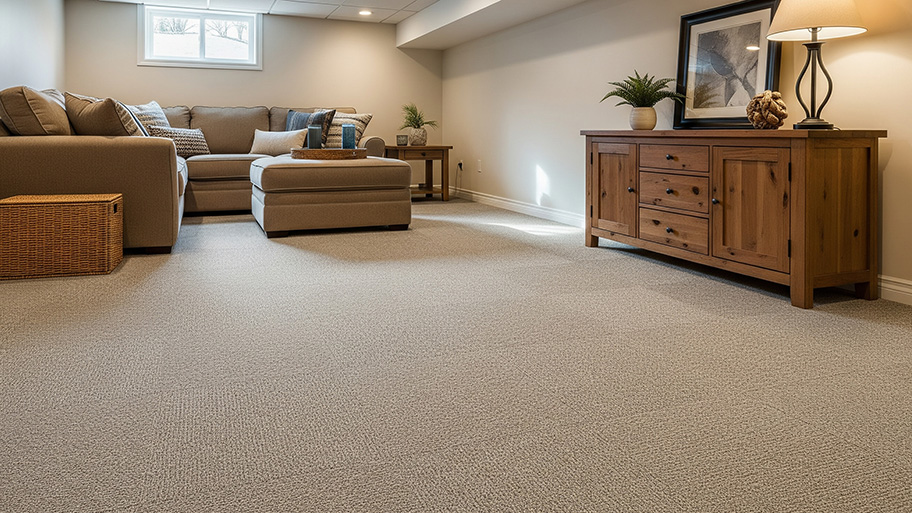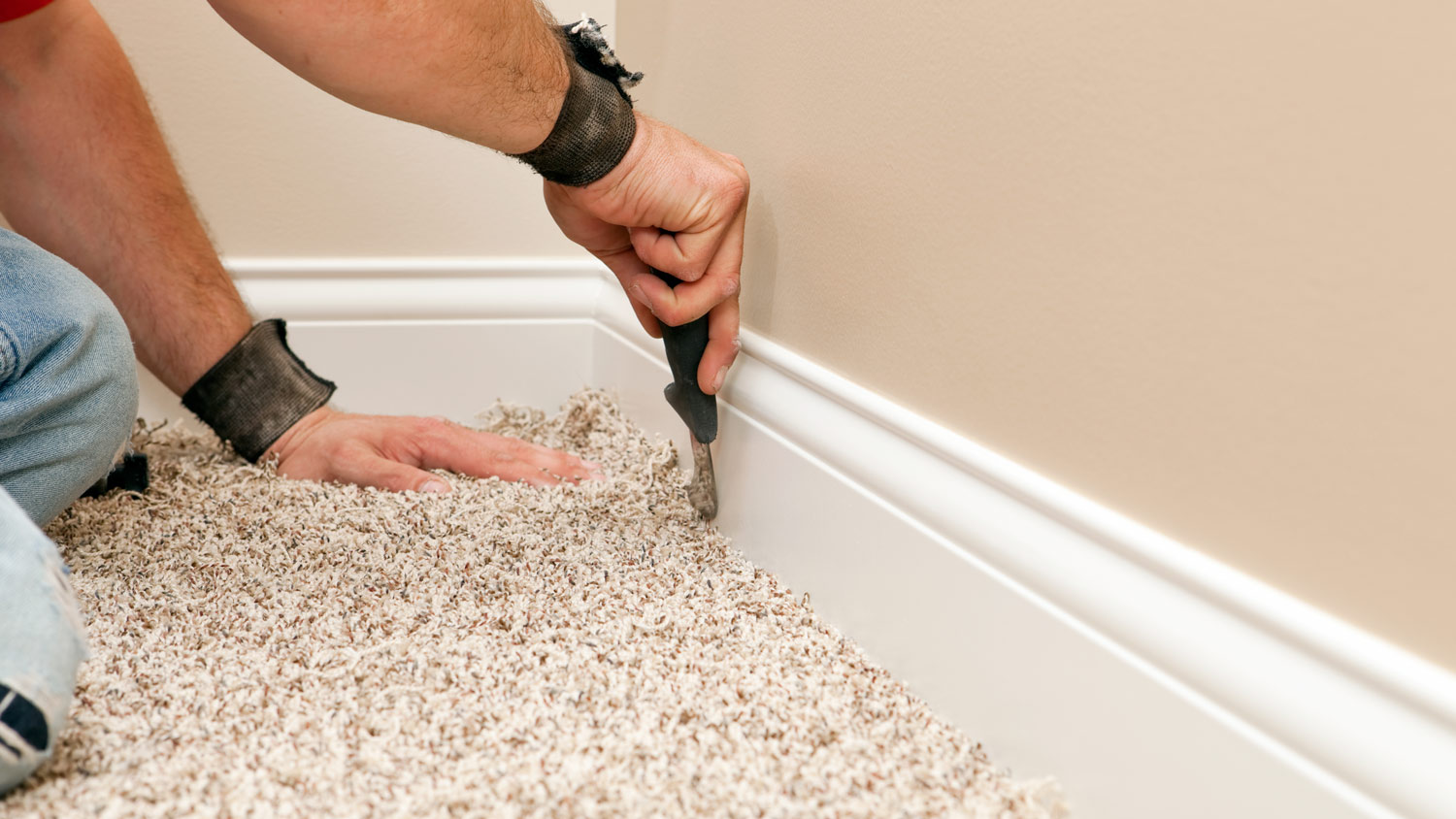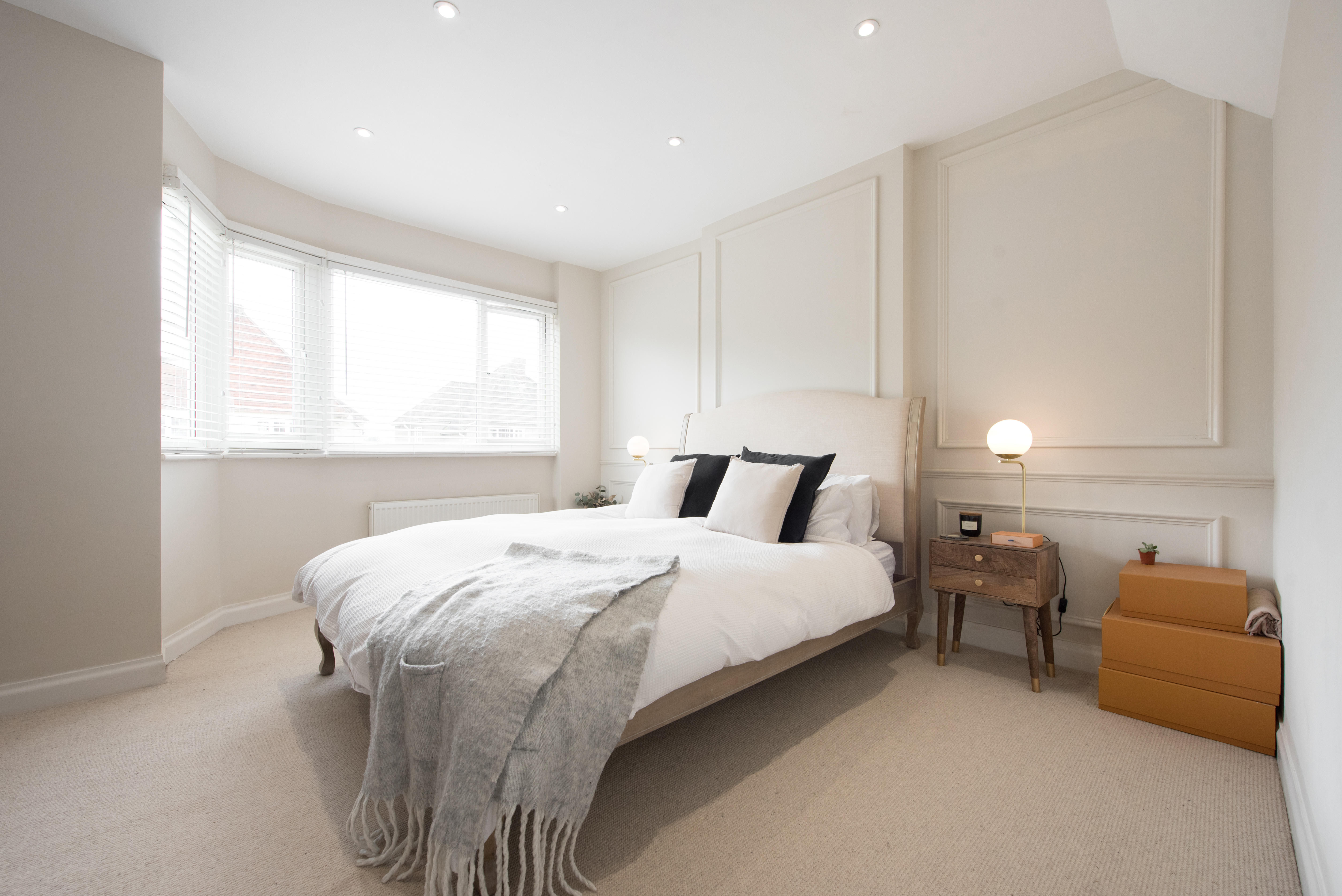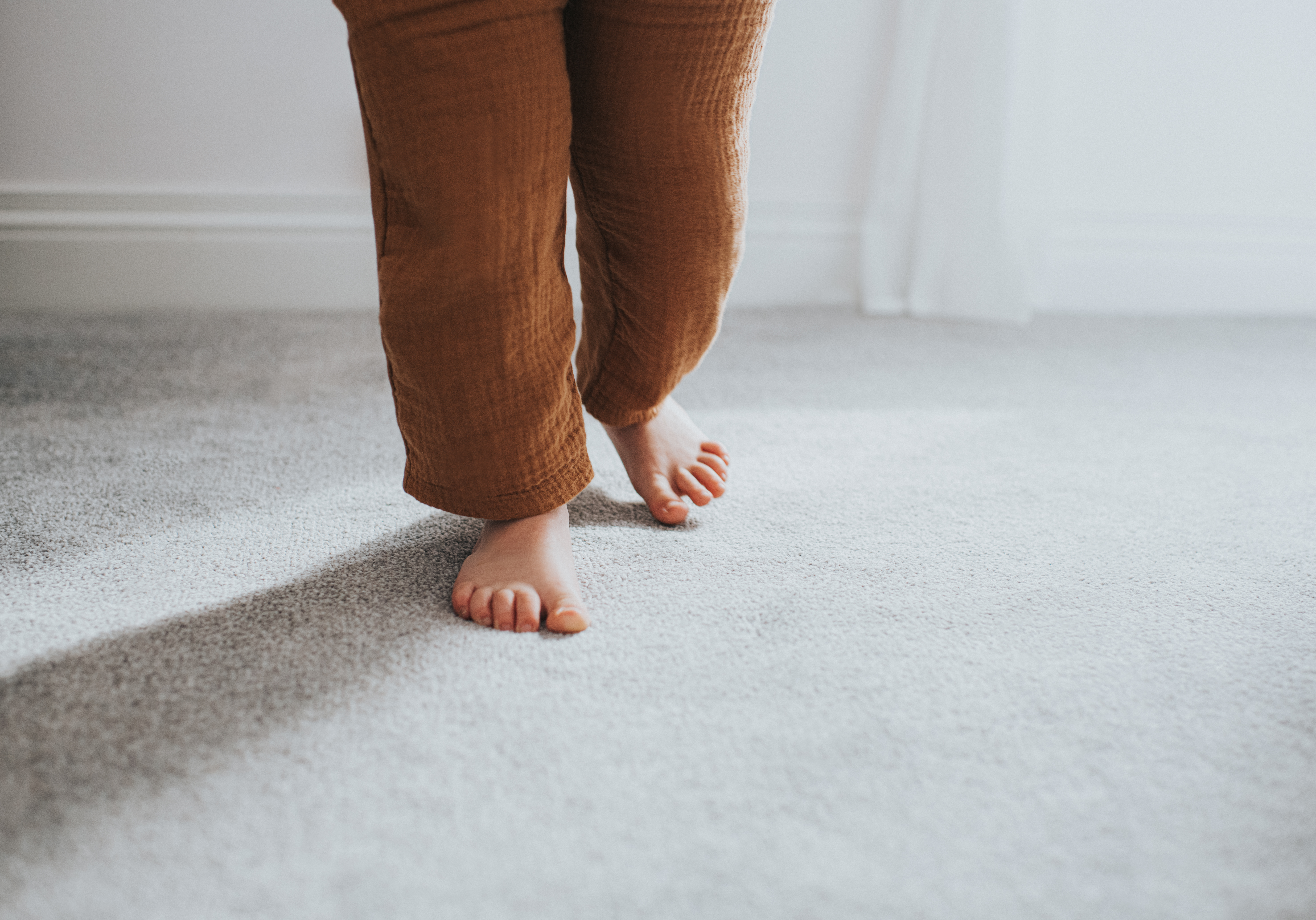
The cost to carpet stairs depends on the number of stairs, material choice, and staircase type. Read on to calculate your project expenses
We’re helping you roll out the savings


Consider buying carpet from late December to mid-January or late spring to early summer to get the best deals.
Tax season and late fall to early winter are the most expensive times to buy carpet.
When buying carpet, keep in mind the carpet’s average life span, traffic patterns in your home, available warranties, and the maintenance requirements for that carpet.
Knowing the best time to buy carpet can save you on your new installation. Carpeting isn’t something you purchase often, and when you do, you’ll want a decent return on your investment. Some times are better than others when it comes to making a final decision, and there are ways to ensure you’re making the right investment.
Carpet sales aren’t prone to trends. In other words, you won’t see last year’s model on clearance because carpet styles don’t change too often. While manufacturers come out with new styles, the basics will still be part of their inventory because the average carpet lasts five to 15 years, so it’s not something homeowners purchase frequently.
However, carpet prices are prone to supply and demand. When demand is high, prices increase. When demand slows, prices fall. The following times are when you can expect to see the best carpet prices.
The holiday season gets busy for most people. Consumers are buying presents, decorations, and food for their holiday get-togethers. They’re excited about creating festive memories and aren't necessarily focused on home renovations, making this the best time to buy carpeting.
Most people don’t have extra funds to spend on home renovations during the busy holiday season, so carpet sales are down. Manufacturers and retailers often run deals during this time to increase sales. If you can swing the purchase during the holiday season, you stand a chance to save the most money.
Don't worry if you don't want your house torn up while trying to entertain or can't stretch your budget for the carpet installation cost during the holidays. You can purchase the carpet when prices are low and install it after the holiday rush.
When May comes around, families become busy with end-of-the-school-year activities and finals. Everyone starts looking forward to the warmer weather and sunny days of early spring. It’s also time for making summer plans and saving for vacations. Home renovations don’t go into full swing until summer (think July and August).
Since most homeowners are holding off on home improvement projects, late spring to early summer is one of the best times to invest in new carpeting. This is also a great time to buy the latest releases, as most carpet manufacturers release new styles in October and April. Then, with sales down in May and June, retailers will slash prices to increase interest in new carpeting products.
When taking on this project, expect questions only a pro can answer. With our network of local pros, you'll get the job done and your questions answered—without the hassle and stress of doing it yourself.

When demand is high, prices increase. It's a natural occurrence with all products, including carpeting. Knowing the worst times to buy carpet can save you as much as 25% on carpeting, as that's how much prices increase during busier times.
Anticipating a large refund check causes many homeowners to spend money on larger home renovations. Rather than racking up credit card debt, they use their tax refund money to fund projects, including new carpeting.
Many people put off the project until they have a lump sum of money, like a tax refund. The higher demand creates higher prices. Salespeople have little incentive to cut you a deal because they know it will sell.
When everyone is gearing up for the holidays, many do major home renovations, including buying new carpets. There's often a large increase in carpet sales, so it's much harder to find a deal during this time.
The increase in sales starts in late October. This is about the time everything settles. Kids are settled in their school routines, parents have a new schedule, and everyone starts shifting gears to cooler months and lots of entertaining.
Adults have more time to focus on the house and prepare for the holidays. Contractors' schedules also book up fast while the price of materials increases.
Knowing the best time to buy carpet is a big piece of the puzzle, but a few more tips can help you get the most bang for your buck.
Different types of carpets last for different lengths of time. The average lifespan is five to 15 years, but some last much shorter or longer.
Do your research to determine how long a particular type of carpet will last and compare it to your timeline. For example, if you plan to move in five years, you may not want to invest in expensive carpeting that will last 15 years.
On the other hand, if you're staying in the home long-term, you may want to invest now so you don't have to prep your home for carpet installation or budget for it in the next few years.
The amount of traffic an area gets will determine the right type of carpeting. High-pile carpet works best in low-traffic areas. For example, a high-pile carpet may work well if you have a spare room or a living room that people don't walk through daily.
In high-traffic areas, though, high-pile carpets will show footprints and won't recover their shape, making them look less attractive. The best carpet for a high-traffic area is a low pile with a dense or short weave. They may not feel as plush as high-pile carpets, but they will look better for a longer period.
Along with traffic, you should consider the required maintenance for the carpet. Low-pile carpet doesn't catch as much dirt, debris, and pet hair as high-pile carpet. If you have pets or kids roaming through the house with dirt on their shoes, low-pile carpet is much easier to clean quickly and resists stains.
No carpet is stain-proof, but some carpets have more stain resistance than others. For example, polypropylene carpets are fairly stain-resistant and relatively inexpensive, but you sacrifice comfort, as they’re somewhat scratchy.
Top-quality nylon and polyester carpeting can also be stain resistant, especially when treated with a stain-resistant coating, and tend to be more comfortable.
Many flooring stores provide free carpet samples, or you can buy them for a couple of dollars. It's worth the investment.
Use the samples to see how the carpet would look next to your furniture and walls. Look at the color and play with the sample, bending it to see the carpet's density. Higher-quality, denser carpet will bend easily, and you won't see much of the backing, whereas lower-quality carpet will be less dense and harder to bend.
Most carpet comes with a warranty. Read the fine print to know what it includes and doesn't. Don't fall for a warranty that seems too good to be true because it probably is. Most warranties are for manufacturer defects, not normal wear and tear, and it's hard to prove the difference.
If you’re tired of carpeting or don’t want the hassle of replacing it every five to 15 years, here are some alternatives.
Hardwood floors: This flooring costs more than carpeting but can last longer. It's available in many different types, including maple, oak, and walnut. When comparing prices, be sure to include the cost to refinish wood floors, which you may have to do down the road.
Engineered wood: If you want the look of hardwood, engineered hardwood flooring costs an average of $4,750 and is a nice replica. It resists moisture well and can handle high-traffic areas. However, you can only refinish engineered wood once, so its lifespan is shorter.
Laminate: This is a common carpet alternative because it's as budget-friendly as carpet and can mimic the look of more expensive options. On average, laminate flooring costs $2,716. It's easy to clean and scratch-resistant, but it doesn't resist moisture well, so don't use it in areas with a lot of water.
Linoleum: This is a common DIY flooring option. Linoleum flooring is relatively affordable and eco-friendly because its linseed oil and rosin construction make it biodegradable and recyclable. This flooring also requires little maintenance. It lasts 20 to 40 years, so learning how to install linoleum flooring can provide an incredible return on your investment.
Buying carpet at the right time can save you money and open up possibilities for you to purchase higher-quality carpet. Focus on what you need from your carpet, including how long you need it to last, how much traffic it can handle, and how much dirt it will hold based on your household.
Buying the carpet is just the start of the project. You'll need to hire a knowledgeable contractor for the installation to get the full life out of your new carpet. Time your purchase just right so that you can get a great deal at the carpet store, and then shop around for a carpet installer near you.
From average costs to expert advice, get all the answers you need to get your job done.

The cost to carpet stairs depends on the number of stairs, material choice, and staircase type. Read on to calculate your project expenses

Not only are carpet tiles easier to install than carpet, but they’re often more affordable. So, how much does carpet tile installation cost? Let’s take a look.

Get a clear estimate for carpet repair cost. Learn what impacts pricing, compare repair types, and find ways to save on your next carpet project.

When you’re replacing carpet, a loop style may seem like a smart, stylish option. To help you decide, consider these loop carpet pros and cons.

Looking for a durable carpet that works across your whole home? Enter: the ever-popular Nylon. Consider these nylon carpet pros and cons before you buy.

Elevate your eating space with our options for the best carpet for your dining room. Discover the benefits of plush wool, durable nylon, and more.